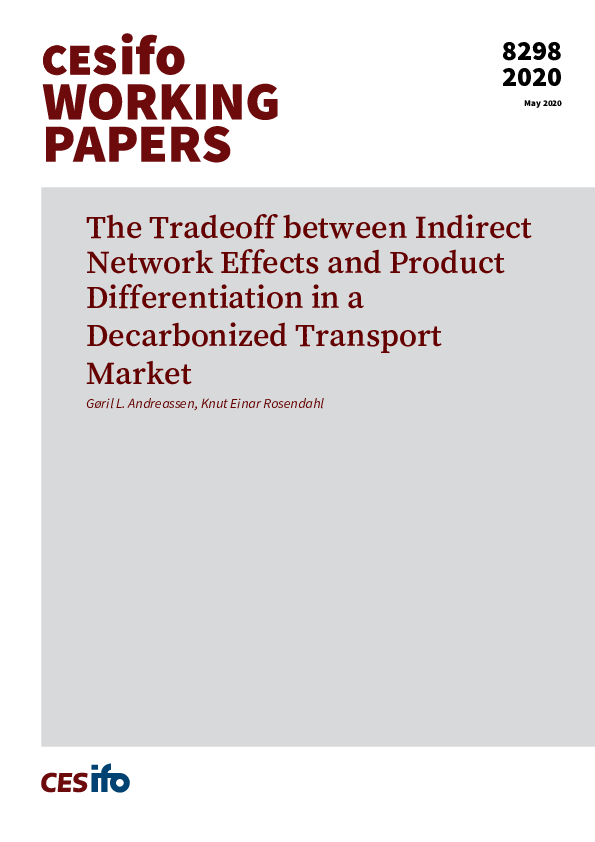The Tradeoff between Indirect Network Effects and Product Differentiation in a Decarbonized Transport Market
CESifo, Munich, 2020
CESifo Working Paper No. 8298

What factors determine whether it is optimal with one or more technologies in a decarbonized road transport sector, and what policies should governments choose? We investigate these questions theoretically and numerically through a static, partial equilibrium model for the road transport market. We find that two important factors that determine whether it will be and whether it should be one or more technologies are how close substitutes the two vehicle technologies are and the number of vehicles of the other technology. Our numerical results indicate that with two incompatible networks, two differentiated goods are optimal compared to only one if they are not too close substitutes. The first-best policy is a subsidy of the markup on charging and filling, where the markup is higher the higher the increased utility of more stations. In addition, to avoid an unwanted lock-in, a temporary stimulus may be needed to reach the stable equilibrium.
Energy and Climate Economics
Industrial Organisation